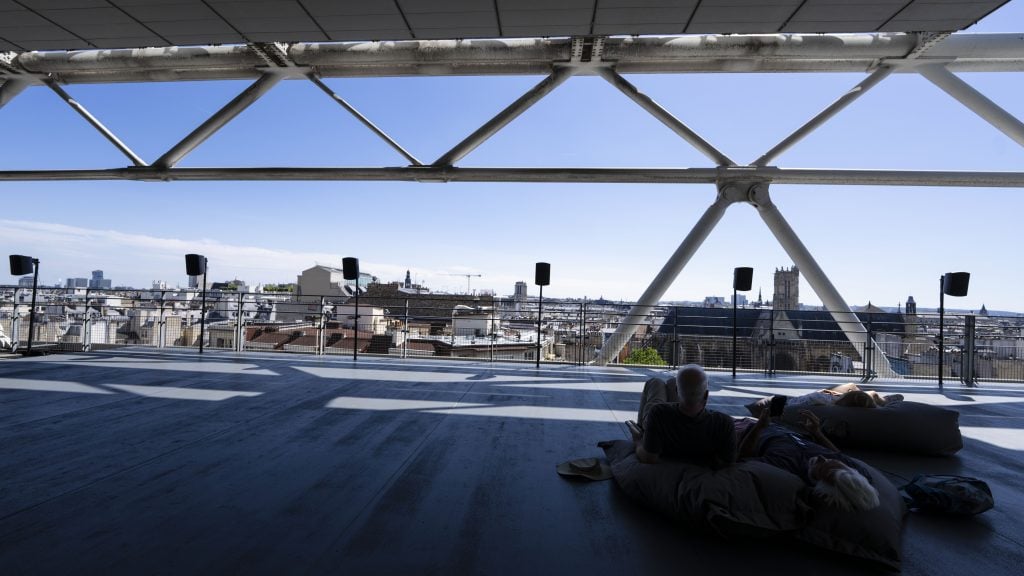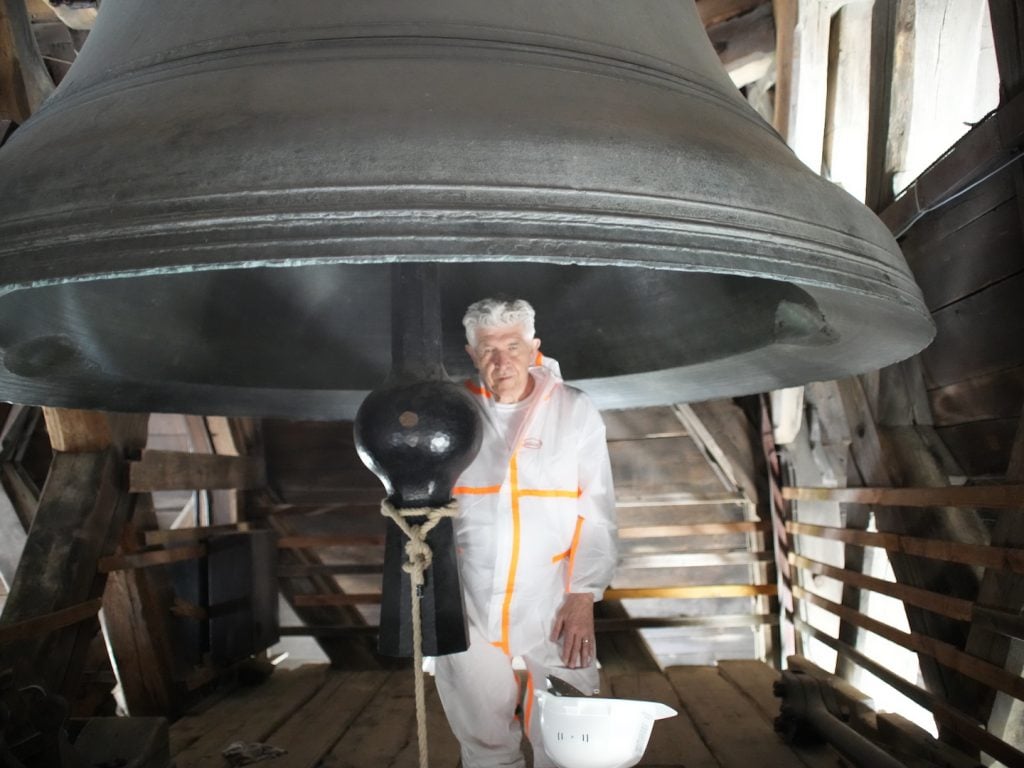On View
Bill Fontana Recorded the Vibrations of Church Bells Inside Fire-Damaged Notre Dame. Now, He’s Taking His Sound Installation on Tour
The installation captures the "spirit" of Notre Dame, the artist said.

The installation captures the "spirit" of Notre Dame, the artist said.

Helen Stoilas

Sirens wail in the distance and horns honk, a piano plays a quiet melody, and church bells ring. The sounds that wash over you in Bill Fontana’s “Silent Echoes” installation at the Villa Albertine in New York this weekend are the city noises “heard” by the bells of Notre Dame, Paris’s historic cathedral.
The Bay Area artist was allowed the rare opportunity to enter the fire-damaged building earlier this year to install accelerometers on the church’s 10 bronze bells, starting with the largest and oldest, known as Emmanuel. These allow him to record the bells’ vibrations, which they continue to emit even when not actively ringing, in response to their environment.
Working with technicians at the Institut de Recherche et Coordination Acoustique/Musique (IRCAM), which is linked to the Centre Pompidou in Paris, Fontana is able to make these recordings audible to human ears.
“The personality changes with the weather and the time of day,” Fontana said. “During normal business hours in Paris, Notre Dame is a construction site. So, the bells will hear the construction. When it is the late afternoon or evening, you sometimes have a street musician with a boombox in front of the cathedral. Early in the morning in Paris, I hear birds in the bell tower.”

Installation view of Bill Fontana’s “Silent Echoes : Notre-Dame 2022” at the Centre Pompidou, June 8–July 2, 2022. Photo: courtesy of the artist.
He has been live streaming the results in a sound installation now on view at the Pompidou, and is bringing the work to New York for two days (June 25-26), where he will also be showing videos taken from high up in Notre Dame’s towers. The aim is to get other institutions interested in presenting the piece.
“With a live-streaming artwork, it would be possible to set up spontaneous pop-up exhibitions anywhere,” Fontana said. He is now working with the French telecommunications giant Orange to explore whether the fiber option network they installed in the bell tower to transmit the audio signals from the bells would also be capable of supporting live cameras.
“The bells are acting basically like acoustic mirrors. They’re reacting to life around Notre Dame,” Fontana said. “At the Centre Pompidou, you don’t need a video element—you’ve got the best view in the world there. But when you’re at a museum, thousands of miles away, it would be interesting to have that kind of live view.”
Fontana is already bringing the work to Istanbul, where he has a solo show at the Arter gallery, and to the Ars Electronica festival in Linz, Austria. The Louvre Abu Dhabi has also shown interest in presenting the piece, he said, and he hopes a New York institution will pick it up as well.
On Friday, Fontana is previewing the installation to a group of art world guests at the Villa Albertine, the French government’s cultural space in Manhattan, just down the street from the Metropolitan Museum of Art. The work will remain on view to the public through the weekend, transmitting the sounds of Paris in real time. “The sounds of the bells are not altered in any way,” Fontana said. “Their placement and movement in the space creates the composition.”

Bill Fontana in Notre Dame’s bell tower, underneath the largest and oldest bell, named Emmanuel. Photo courtesy of the artist.
He has previously described the sounds of Paris reverberating through the bells as the “spirit” of Notre Dame, showing that the historic church, which was devastated by fire in 2019, is a survivor. “It’s alive and well,” Fontana said, “and it’s ongoing.”
His contract with Notre Dame allows his recording equipment to remain installed in the church through to the end of its restoration. Which means he will be able to hear the church as it returns to bustling activity.
“I’ve spent so many hours of my recent life listening to these bells,” Fontana added. “It’s this very beautiful, almost mystical sound.”